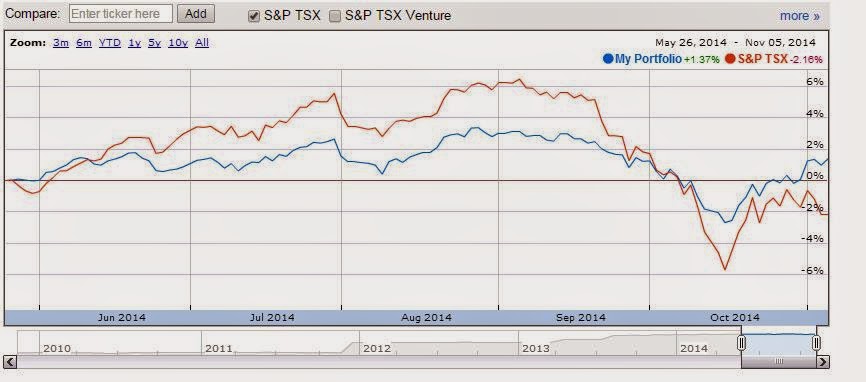The Need To Diversify
 |
| A sharp drop for the TSX. Not as steep for our portfolio. |
Every time wifey and I would contribute to our portfolio, I would purchase the ETFs based on our target allocation.
So you don't have to go searching for it, my target allocations are as follows:
- Canadian Bonds ETF - 30%
- Canadian ETF - 30%
- US ETF - 20%
- International ETF - 20%
In the lead up to the correction, the Toronto Stock Exchange was having an incredible run. At one point in the year, it was up 14% from January 1. Every time wifey and I would contribute money to our brokerage accounts, we'd buy mainly bonds and International ETFs as the Canadian and US ETFs were climbing higher and higher.
Finally, the correction came. Suddenly, the Canadian and US ETFs weren't looking very good. If you look at the graph I posted above, you can see the TSX dropped 12% over the span of one month. Yikes!
During the same time, our portfolio dropped in value by 5%. As the price of stocks fell, the price of bonds rose. Our 30% allocation in bonds kept our portfolio from dropping too far.
Bonds have since cooled down, but there is still turmoil in the Canadian index. In the last few weeks, seems the US and International ETFs have gone up. Overall, this has had a net positive effect on our portfolio.
Since we started investing in late May, if we put all our money into the Canadian ETFs, our portfolio would be down over 2%. However, because we are diversified, we're up 1.37%.
After seeing this real life example (with our own money), it certainly drives the point home that a healthy portfolio is one that is diversified. While not risk free, a diversified portfolio will help mitigate risks in times of market corrections and downturns.


Comments
Post a Comment